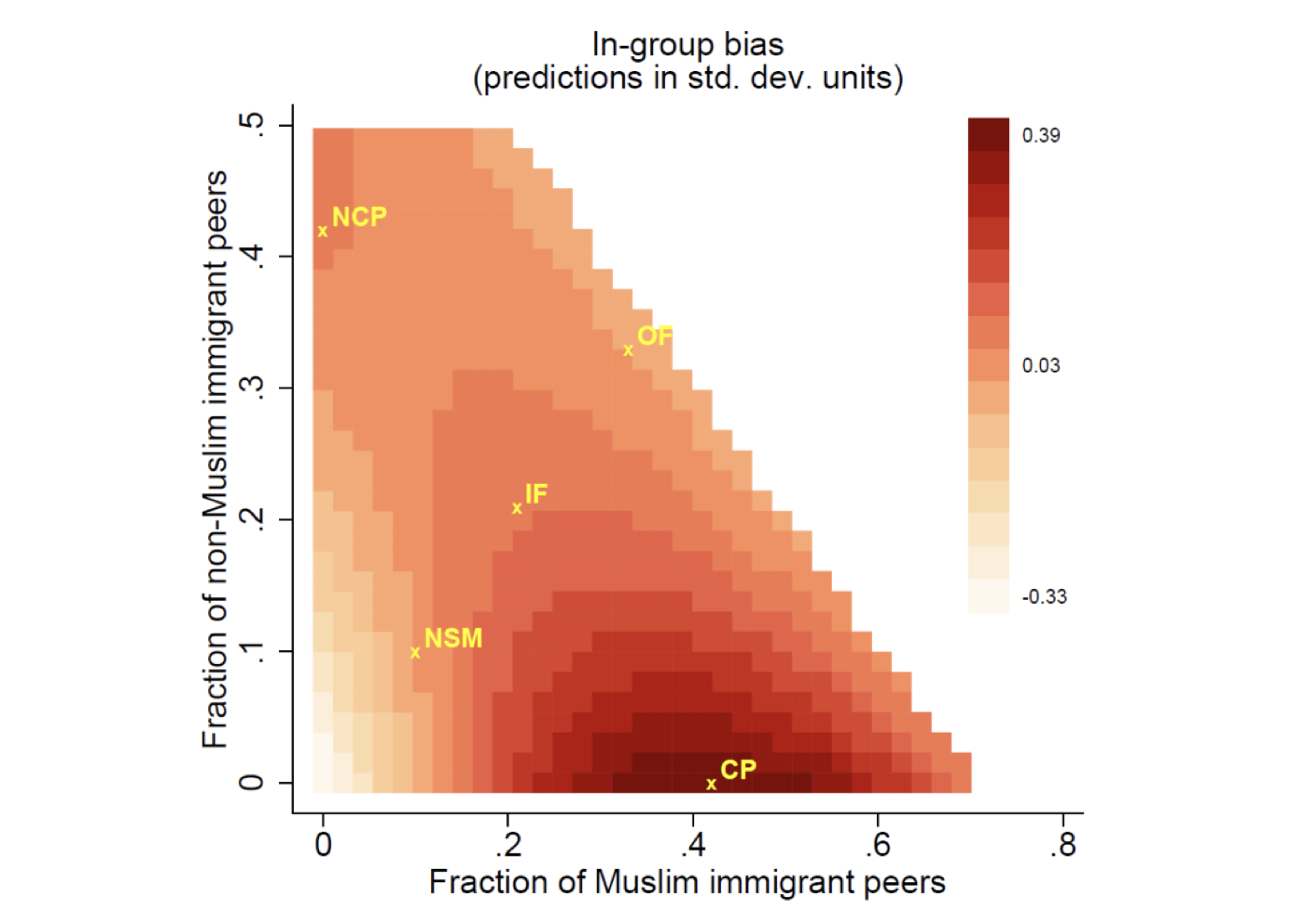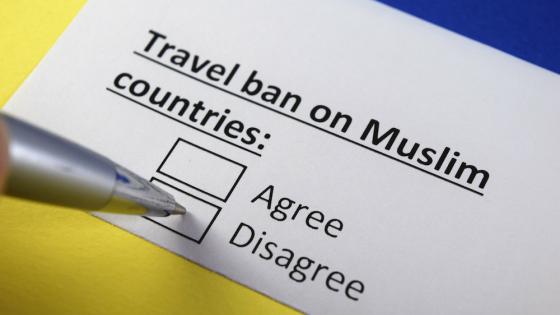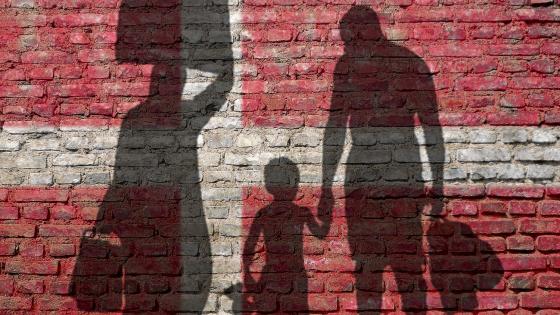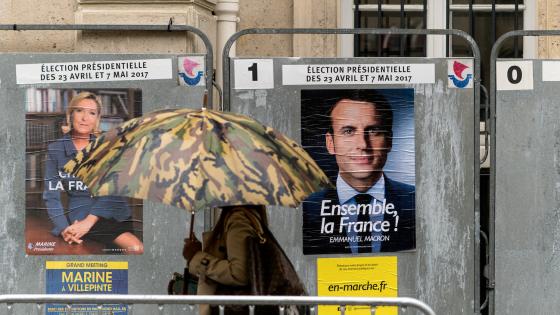Immigration has surged in recent decades, rendering societies increasingly diverse. In Europe, one out of evey six people are not living in their country of origin. This proportion increases to one in four in the top destination countries such as Germany. And a look at the younger generation reveals that these numbers are likely to continue to rise. Combatting the challenges and risks of diversity – among them the worrying rise in populism (Docquier et al. 2024) – requires trust and cooperation across national, religious, and ethnic divides.
Public education is one of the few social institutions with the potential to foster such intergroup cooperation. Schools are a place that bring youth from diverse backgrounds together and offers them opportunities for contact and collaboration. This, in turn, could break down prejudices and stereotypes and thus ultimately prepare the next generations to thrive in and contribute positively to a diverse society (Allport 1954, Rao et al. 2021).
Fractionalisation versus polarisation
Unfortunately, it is not that simple. The consequences of inter-group contact may vary depending on the relative representation of the different groups. For example, if there are only a few big groups, they may try to dominate each other. This, in turn, could undermine intergroup cooperation and trust. In contrast, small groups may come together or join a larger group with a shared identity, which could foster intergroup cooperation and ultimately strengthen social cohesion.
In recent work (Anderberg et al. 2024), we study the opposing forces of fractionalisation and polarisation operating within diverse classrooms in German schools. Specifically, we ask whether a polarised classroom fosters own-group attachment among native students, fuelling their in-group bias and contributing to discrimination against immigrants. We also shed light on the role of cultural distance between the majority and the minority groups in explaining the prevalence of in-group biases.
Diversity in German schools
The focus on German classrooms is interesting for several reasons. First, it focuses on adolescence, a critical life-cycle stage when attitudes and preferences are malleable and susceptible to socialising forces. Second, it represents a micro-level setting, which stands in contrast to the macro-level of nations and communities to which the fractionalisation-polarisation paradigm has largely been applied in studies so far (e.g. Wong et al. 2018). Third, it is a setting within a highly developed country where migration-induced diversity is only going to become more pervasive in the years ahead.
To learn more about the link between diversity and discrimination, we conducted in-class surveys of students in their final year of compulsory schooling (normally 15-16 years old) in 57 German schools. We combined these surveys with an incentivised ‘lab-in-the-field’ experiment (an investment game, also known as the ‘trust’ game). This allowed us to assess how native German students cooperate with in-group (other natives) versus out-group (immigrants) partners, respectively. Our main measure for in-group bias is the difference in how much a native is willing to invest in a fellow native versus an immigrant. Importantly, the interaction partners in these games were anonymous to the participants and drawn from a different school.
Our analysis compares the in-group bias of students assigned to different classes within the same school. This approach deals with the worry that students (or their parents) may intentionally select into schools to seek a more or less diverse environment. But within a school, we argue that which classrooms have more or less immigrants in them is as good as random. This is because in Germany, schools often have explicit rules to ensure a non-discriminatory practice in the assignment of students to classrooms. Empirically, we find support for such random assignment.
Discrimination peaks in culturally polarised settings
Our study yields two key findings:
- Natives’ in-group bias peaks in the case of polarised classrooms
- Natives’ in-group bias peaks in polarised classrooms where only natives and culturally distant immigrants are present and are roughly equally represented.
Starting with the overall share of immigrants as a proxy for diversity in a classroom, we observe that the in-group bias among natives initially expands with the rising share of immigrants, but it reverses course and contracts as the immigrant share further rises. This reversal happens when there is an approximate parity between natives and immigrants within a class. At this point, a one-standard deviation change in the immigrant share (21ppt) shrinks the in-group out-group investment gap by 10% of a standard deviation.
To investigate how the cultural background and the relative size of immigrant subgroups matter, we use religious affiliation as a first proxy for cultural distance and distinguish between Muslim and non-Muslim immigrant students. In Figure 1, we plot the heat map for the in-group bias, i.e. the difference in the investments natives make in fellow natives (in-group) versus immigrants (out-group). In the heat map, the darker colours indicate a larger investment gap. An interesting pattern emerges: The strongest in-group bias exists in classrooms with a clear divide in culture between two large groups. In particular, the maximum investment gap occurs when there is a slight native majority and an almost equally-sized set of students who are Muslim. This peak is shown in Figure 1 with the label CP (cultural polarisation).
The figure also labels other types of diversity in the classroom. These include classrooms where a slight majority are native students and there is a large group of non-Muslim immigrants (non-cultural polarisation, or NCP); where there is a slight native majority and immigrants are equally divided between Muslims and non-Muslims (immigrant fractionalisation, or IF); where natives, Muslim immigrants, and non-Muslim immigrants are equally large groups (overall fractionalisation, or OF); and where most students are natives (native super majority, or NSM). Relative to these other types of classroom diversity, cultural polarisation leads to between 32% and 41% higher in-group bias among natives.
Figure 1 Natives’ in-group bias: How type of diversity matters
Mechanisms
There are three possible explanations for our findings: accurate statistical discrimination, negative stereotypes (i.e. inaccurate statistical discrimination), and taste-based discrimination. One important prerequisite for cooperation is trust. Trust hinges on people’s beliefs about the trustworthiness of those they interact with and expectations of reciprocity. The way we set up our experiment, accurate statistical discrimination about trust is constant across classroom types, so by design it cannot explain differences in culturally polarised classroom versus other four classroom types.
We do find evidence for inaccurate statistical discrimination, however. In other words, native students in culturally polarised classrooms inaccurately generalise their classroom experiences and develop negative stereotypes about the trustworthiness of all immigrants, leading them to invest less in immigrants compared to natives.
In our context, taste-based discrimination means that natives prefer giving money to other natives more so than to immigrants. Using both experimental evidence on giving behaviour and survey-based evidence on anti-immigrant sentiment, we find evidence that taste-based discrimination is highest in culturally polarised classrooms compared to the other classroom configurations.
In sum, culturally polarised classrooms both encourage negative stereotypes about immigrant’s trustworthiness and amplify taste-based discrimination. These mechanisms are costly to natives, and hence are predicted to result in lower payouts. In line with this prediction, we find that payoff losses in the investment game are largest in culturally polarised classrooms compared to other classroom types (non-cultural polarisation, immigrant fractionalisation, and a native supermajority).
A call to action
This column serves as a call to action, indicating the need for extra measures to address the lack of trust in culturally polarised environments. In schools, possible solutions might include adjusting the curriculum to emphasise inclusion (Alan et al. 2021) or using randomised seating arrangements to encourage friendships across different groups (Elwert et al. 2023). Our results also have broader implications. Governments often use different methods to distribute refugees and immigrants across regions, and recent research has focused on improving these methods. Our findings suggest that it's crucial to consider whether the receiving communities might become culturally polarised when making these allocation decisions.
References
Alan, S, C Baysan, M Gumren and E Kubilay (2021), “Building Social Cohesion in Ethnically Mixed Schools: An Intervention on Perspective Taking,” The Quarterly Journal of Economics 136 (4): 2147–2194.
Allport, G W, K Clark and T Pettigrew (1954), The Nature of Prejudice, Cambridge, MA: Addison-Wesley Publishing.
Anderberg, D, G Dahl, C Felfe, H Rainer and T Siedler (2024), “Diversity and Discrimination in the Classroom”, CEPR Discussion Paper 18857.
Docquier, F, S Iandolo, H Rapoport, R Turati and G Vannoorenberghe (2024), “Populism and the skill content of globalization”, VoxEU.org, 12 March
Elwert, F, T Keller and A Kotsadam (2023), “Rearranging the Desk Chairs: A Large Randomized Field Experiment on the Effects of Close Contact on Interethnic Relations”, American Journal of Sociology 128(6).
Rao, A, T Chaney, T Hassan and L Bursztyn (2021), “Long-run contact with immigrant groups, prejudice, and altruism”, VoxEU.org, March 21.
Wong, M, A Gaduh, A Rothenberg and S Bazzi (2018), “How intergroup contact can foster nation-building”, VoxEU.org, 7 January.









